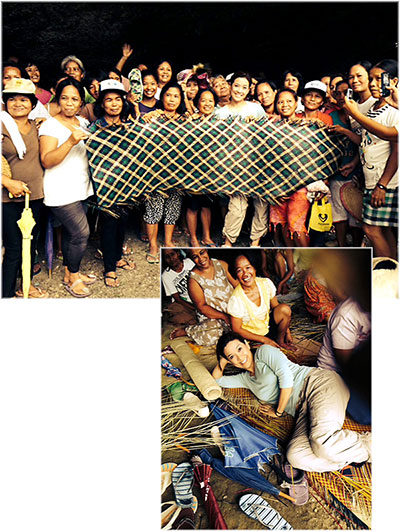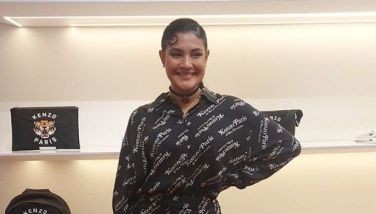A labor of love
When we were still kids, my kuyas and I slept in a plastic banig in our parents’ bedroom. Since I was the smallest, I was sandwiched between them. I liked making my version of tipi from our banig. Once inside, I would stare at the colorful patterns which to me looked like glass windows.
Due to wear and tear, the edges of the plastic banig were falling apart. Before long, gone was the banig and I was the only one sleeping in my parents’ room… in a sleeping bag.
My fond memories of our banig were sparked by my visit to Samar where we met with two groups of women who made banig from ticog, a wild plant similar to the cogon grass. The first group of weavers was from Basey. They were busy working in small wooden house with two floors. I was surprised to see about 20 women scattered all over the floor — their hands (and feet!) busy at work. The nanays, each had their own way of weaving, but the process entailed using the hands and the weight of one’s feet and legs to stretch the ticog and complete a snug piece of banig. One of the nanays wanted to teach me so she grabbed my left leg, bent it and twisted the ticog around my knee. The woman was not sure if I could bend and stretch my leg like them. It was rather awkward, reminding me of my yoga poses. But the nanays — because they’ve been weaving ticog for decades — had no problem whatsoever even if they worked on the floor, bent back with stretched legs for hours in a day.
Next, we visited a community of women making banig underneath a cave in Marabut. I really thought they were there for cinematic purposes — for better footage for the news team. But according to John, a Jesuit volunteer, this is really where the nanays make the banig even generations ago. It’s a perfect site to weave — under the shelter of the cave, beside the field of ticog grass. The whole scenario had a zen-like feel to it: The wind on your face and the sound of the grass caressing your ears. I doubt though if the nanays see it this way at all. The nanays were there to earn a living like 71-year-old Lola Lolita. She’s been making ticog since she was 12 years old. Lola Lolita bragged, “I can weave with my eyes closed.” I believe her after seeing how her fingers moved almost as fast as we would type on a keyboard, never skipping a beat — swift and effortless. “I plan to do this forever,” said Lola Lolita.
 Fond memories of my childhood banig were sparked by a visit to Samar where this writer met two groups of women who made banig out of ticog, a wild plant similar to cogon grass. Above: The nanays of Basey have been weaving banig from ticog for decades now.
Fond memories of my childhood banig were sparked by a visit to Samar where this writer met two groups of women who made banig out of ticog, a wild plant similar to cogon grass. Above: The nanays of Basey have been weaving banig from ticog for decades now.Despite their handwork and dedication to making a banig, income from it remains menial. It would take them one whole day to finish a “single” banig (for one person). This would get sold only for P150. ABS-CBN Lingkod Kapamilya Foundation volunteers are training the nanays to make other items out of ticog that can demand higher prices — like placemats, floor mats, bags and slippers — and maybe in the future, collaborate with designers. The foundation will also help market and sell the woven products. I bought a few items from the community — a banig, some slippers and placemats. I love the different colors and patterns, but I appreciate the banig more after witnessing the labor of love that the nanays put into it. I’d like to think there was a part of them that I brought home with me.
(For comments, e-mail me at [email protected].)
- Latest
- Trending



























 Exclusive
Exclusive
